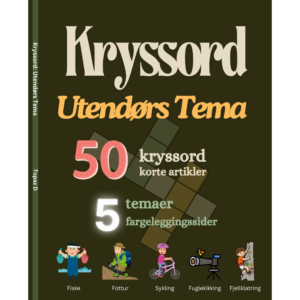
Explore & Play
Discover interesting topics and solve the accompanying crossword puzzle.
Language Crossword | World’s Top Languages
Table of Contents
Welcome to our exploration of the world’s most spoken languages! To enhance your experience, you can start by tackling our Language crossword to test your knowledge. Afterward, dive into the article to uncover detailed insights about each language’s unique features and cultural significance. If you’re new to the topic, feel free to read through the article first to gain a solid understanding, and then come back to challenge yourself with the crossword. Enjoy your journey through language and learning!
Language Crossword
You can either fill in the crossword puzzle directly on this page or click the button in the bottom right corner to print it for free.

The World's Most Spoken Languages: A Comprehensive Exploration
Language is a fundamental aspect of human culture and communication, serving as a bridge between diverse communities across the globe. This article delves into some of the world’s most spoken languages, examining their unique features and the roles they play in their respective regions. Along the way, we’ll provide insights that could help you solve a fascinating crossword puzzle centered around these languages.
1. English: Global Dominance and Linguistic Influence
English is renowned for its widespread use across the globe, making it a truly global language. With its origins in the Anglo-Saxon period, English has evolved significantly, influenced by Norman French, Latin, and other languages. It boasts a vast vocabulary and is the primary language of international business, science, and diplomacy.
The English language is marked by its complex system of tenses, extensive vocabulary, and global spread. Its use of the Latin alphabet and significant influence from other languages have made it adaptable and diverse. Countries such as the United Kingdom, the United States, Canada, Australia, and New Zealand use English as a primary or secondary language, reflecting its extensive reach and impact.
2. Mandarin Chinese: Character-Based Script and Regional Impact
Mandarin Chinese is distinguished by its use of characters rather than an alphabet. This logographic writing system, which represents words or morphemes with unique symbols, sets Mandarin apart from many other languages. Spoken primarily in China, Taiwan, and Singapore, Mandarin is known for its tonal nature, where pitch can change the meaning of words.
The language’s historical roots in classical Chinese literature and its significant influence on East Asia underscore its importance. With over a billion speakers, Mandarin Chinese’s role in global communication and commerce continues to grow, making it a crucial language to understand in the modern world.
3. Hindi: Devanagari Script and Cultural Richness
Hindi, written in the Devanagari script, is a major language in India with deep cultural significance. The Devanagari script, known for its distinctive horizontal line running along the top of the characters, is a key feature of Hindi. This language’s rich literary tradition includes ancient texts, poetry, and modern literature, reflecting its historical and cultural depth.
Spoken primarily in northern and central India, Hindi is one of the country’s official languages and plays a significant role in Indian media, literature, and politics. Its widespread use in Bollywood films has also contributed to its global recognition.
4. Spanish: Romance Language with Global Reach
Spanish, a Romance language with roots in Latin, has a significant global presence. It is spoken in Spain and many countries across Latin America, including Mexico, Argentina, and Colombia. Spanish’s phonetic nature, where words are pronounced as they are written, and its use of the Latin alphabet make it accessible and relatively straightforward to learn.
The language’s extensive vocabulary and rich cultural heritage, including contributions to literature and cinema, have cemented its role as a major world language. Spanish is also one of the official languages of international organizations such as the United Nations.
5. French: Language of Diplomacy and Culture
French is celebrated for its influence in international diplomacy and culture. With its origins in Latin, French has evolved into a language known for its elegance and precision. It is spoken in France, Belgium, Switzerland, Canada, and several African countries.
The French language’s use of the Latin alphabet, along with its distinctive pronunciation and grammatical structure, makes it unique. French is renowned for its contributions to art, literature, and culinary arts, further enhancing its global significance.
6. Arabic: Script and Regional Diversity
Arabic, with its script written from right to left, is a major language in the Middle East and North Africa. Its script, known for its flowing cursive style, adds to the language’s aesthetic and cultural value. Arabic is characterized by its complex system of roots and patterns, which form the basis of its vocabulary.
The language’s influence extends to religion, with Classical Arabic being the language of the Quran. Modern Standard Arabic, used in formal contexts, and various regional dialects highlight the language’s diversity and widespread use.
7. Bengali: Script and Regional Influence
Bengali, with its use of the Bengali script, is a major language in South Asia, particularly in Bangladesh and the Indian state of West Bengal. The script, known for its rounded characters, is an integral part of the language’s identity. Bengali has a rich literary tradition, including poetry, prose, and Nobel laureate Rabindranath Tagore’s works.
The language’s influence extends to cultural and social aspects of life in its regions. Its significance in literature, music, and cinema reflects its deep cultural roots and regional importance.
8. Portuguese: Iberian Origins and Global Impact
Portuguese, originating in the Iberian Peninsula, has spread to various parts of the world through exploration and colonization. Spoken in Portugal, Brazil, and several African countries, Portuguese uses the Latin alphabet and has a phonetic nature similar to Spanish.
The language’s global reach, particularly due to Brazil’s significant population and economic influence, has made it a key language in international business and diplomacy. Portuguese-speaking countries contribute a rich cultural and literary heritage to the global stage.
9. Russian: Cyrillic Script and Geopolitical Significance
Russian, using the Cyrillic script, is a major language in Eastern Europe and Northern Asia. Its script, which includes unique characters not found in the Latin alphabet, reflects the language’s distinctiveness. Russian is known for its complex grammar and extensive vocabulary.
The language’s role in science, literature, and international relations highlights its geopolitical significance. With its historical contributions and contemporary influence, Russian remains a crucial language in global communication.
10. Japanese: Kanji Characters and Cultural Impact
Japanese, with its use of Kanji characters, is a language with deep cultural and historical roots. Kanji, borrowed from Chinese characters, adds a unique dimension to the language’s writing system. Japanese is known for its complex honorifics and levels of politeness, reflecting the cultural emphasis on social hierarchy.
The language’s influence extends through Japan’s contributions to technology, media, and literature. Japanese pop culture, including anime and manga, has global appeal, further highlighting the language’s cultural impact.
11. Turkish: Turkic Roots and Script Changes
Turkish, with its Turkic roots, has undergone significant changes, including a shift from the Arabic script to the Latin alphabet in the 20th century. This transition reflects Turkey’s modernization efforts and its impact on the language’s development.
Turkish is spoken in Turkey and Cyprus and has a unique phonetic system that differentiates it from many other languages. Its rich literary tradition and cultural heritage make it a significant language in both historical and contemporary contexts.
12. Korean: Hangul Script and Linguistic Features
Korean, using the Hangul script, is known for its phonetic and systematic writing system. Hangul, created in the 15th century, is designed to be easy to learn and use. Korean’s linguistic features include a unique sentence structure and a rich vocabulary influenced by Chinese.
The language’s role in South Korean culture, including its contributions to global pop culture through K-pop and cinema, underscores its global significance. Korean’s distinctive script and phonetic qualities make it an intriguing language to study.
13. Vietnamese: Tonal Nature and Latin Alphabet
Vietnamese, with its use of the Latin alphabet and tonal nature, stands out in Southeast Asia. The language’s tonal system, where pitch affects meaning, adds complexity to its phonetics. Vietnamese’s adoption of the Latin script, replacing the traditional Chinese characters, reflects its modern linguistic development.
The language’s role in Vietnam’s culture, including its literature and media, highlights its significance in the region. Vietnamese’s unique phonetic and orthographic features make it an interesting language to explore.
14. Thai: Script and Tonal Features
Thai, using its distinctive script, is a key language in Thailand with a rich cultural heritage. The script, known for its intricate characters, is a significant feature of the language. Thai’s tonal nature, where tone changes meaning, adds to its linguistic complexity.
The language’s role in Thai culture, including its literature and traditional arts, reflects its deep cultural roots. Thai’s unique script and tonal features contribute to its distinctiveness in the linguistic landscape.
15. Greek: Ancient Roots and Modern Usage
Greek, with its ancient roots and use of the Greek alphabet, has a rich history that spans millennia. The Greek alphabet, one of the oldest writing systems still in use, is a key feature of the language. Greek’s contributions to philosophy, science, and literature underscore its historical significance.
The language’s modern usage in Greece and Cyprus continues to reflect its cultural heritage. Greek’s historical and contemporary impact makes it a fascinating language to study and understand.
16. Hebrew: Ancient Script and Modern Revival
Hebrew, with its ancient script and modern revival, is a significant language in Israel and Jewish communities worldwide. The script, known for its distinctive characters, reflects the language’s historical roots. Modern Hebrew’s revival in the 19th and 20th centuries highlights its resilience and adaptability.
The language’s role in religious texts and contemporary Israeli culture underscores its importance. Hebrew’s unique script and historical significance make it a notable language in the global context.
17. Tamil: Ancient Language with Dravidian Roots
Tamil, one of the oldest living languages with Dravidian roots, has a rich literary and cultural heritage. Spoken primarily in Tamil Nadu (India) and Sri Lanka, Tamil is known for its classical literature and historical significance. The language’s script and linguistic features reflect its ancient origins.
Tamil’s role in South Indian culture, including its contributions to literature, music, and cinema, highlights its significance. The language’s enduring cultural impact underscores its importance in the Dravidian linguistic family.
18. Punjabi: Script and Regional Influence
Punjabi, spoken in the Punjab region of India and Pakistan, is known for its use of the Gurmukhi and Shahmukhi scripts. The Gurmukhi script, used predominantly in India, and the Shahmukhi script, used in Pakistan, reflect the language’s regional diversity. Punjabi has a rich tradition of poetry and music, contributing to its cultural significance.
The language’s role in regional culture and its influence in literature and arts highlight its importance. Punjabi’s unique scripts and cultural contributions make it a significant language in South Asia.
19. Swahili: Bantu Roots and Global Use
Swahili, with its Bantu roots and significant influence from Arabic, is a key language in East Africa. Spoken in countries such as Kenya, Tanzania, and Uganda, Swahili uses a Latin-based alphabet and has a rich oral tradition. The language’s role in trade and communication across East Africa underscores its regional significance.
Swahili’s unique linguistic features and cultural impact highlight its importance in the region. Its use as a lingua franca in East Africa makes it a vital language in global communication.
20. Malay: Language of Southeast Asia with Diverse Dialects
Malay, spoken in Malaysia, Indonesia, and Brunei, is a language with diverse dialects and regional variations. The language uses the Latin alphabet and has been influenced by Arabic, Chinese, and Dutch. Malay’s role in regional communication and trade reflects its significance in Southeast Asia.
The language’s diverse dialects and historical influences contribute to its rich linguistic heritage. Malay’s use in multiple countries underscores its importance in the Southeast Asian region.
21. Nepali: Devanagari Script and Regional Influence
Nepali, written in the Devanagari script, is spoken in Nepal and parts of India. The script, known for its distinctive characters, is a key feature of the language. Nepali’s influence in the Himalayas and its role in regional culture and politics highlight its significance in South Asia.
The language’s use in government, literature, and media underscores its importance in the region. Nepali’s unique script and regional influence make it a notable language in the South Asian context.
22. Pashto: Language with Persian Influences
Pashto, spoken primarily in Afghanistan and Pakistan, has Persian influences and uses a script adapted from Arabic. Known for its rich oral literature and poetic tradition, Pashto reflects its cultural and historical significance in the region. The language’s role in regional communication and culture highlights its importance.
Pashto’s unique script and linguistic features contribute to its distinctiveness. The language’s cultural impact and historical roots make it an intriguing language to explore.
23. Urdu: Language of South Asia with Persian Influence
Urdu, with its Persian influences and use of the Arabic script, is spoken primarily in Pakistan and parts of India. The language’s rich literary tradition, including poetry and prose, reflects its cultural significance. Urdu’s role in regional communication and culture underscores its importance in South Asia.
The language’s use of the Arabic script and its Persian influences highlight its unique characteristics. Urdu’s literary and cultural contributions make it a significant language in the region.
24. Sinhala: Language of Sri Lanka with Unique Script
Sinhala, spoken in Sri Lanka, uses a unique script that is integral to its linguistic identity. The language’s script, known for its distinctive characters, reflects its cultural heritage. Sinhala’s role in Sri Lankan literature and culture underscores its significance in the region.
The language’s unique script and historical roots contribute to its distinctiveness. Sinhala’s cultural impact and role in regional communication make it an important language in South Asia.
25. Lao: Language of Laos with Unique Script
Lao, with its unique script and phonetic system, is a significant language in Laos with cultural importance. The script, derived from ancient Khmer, adds to the language’s distinctiveness. Lao’s role in regional communication and culture highlights its importance in Southeast Asia.
The language’s unique script and phonetic nature reflect its linguistic heritage. Lao’s cultural significance and regional use make it an intriguing language to study.
26. Burmese: Script and Language of Myanmar
Burmese, using a unique script and spoken in Myanmar, has distinct phonetic and grammatical features. The script, derived from ancient Mon, is a key aspect of the language. Burmese’s role in Myanmar’s culture and communication underscores its significance in the region.
The language’s unique script and phonetic features contribute to its distinctiveness. Burmese’s cultural impact and regional use make it a notable language in Southeast Asia.
27. Khmer: Language of Cambodia with Unique Script
Khmer, with its unique script and historical significance, is a major language in Cambodia with a rich cultural heritage. The script, derived from ancient Indian scripts, is an integral part of the language. Khmer’s role in Cambodian culture and communication highlights its importance in Southeast Asia.
The language’s unique script and historical roots reflect its cultural significance. Khmer’s impact on regional communication and culture makes it a significant language in the region.
By exploring these languages, we uncover a tapestry of linguistic diversity that enriches our understanding of the world. From the intricate scripts of Korean and Thai to the tonal beauty of Vietnamese, each language offers a unique glimpse into its speakers’ culture and history.
Ready to test your knowledge? Dive into our crossword puzzle featuring these languages and see how many you can solve!
Share to...
I hope you enjoy the content.
Want to receive our daily crossword puzzle or article? Subscribe!
You may also be interested in
Share to…
Want to receive our daily crossword puzzle?
-
Jigsaw Puzzles
Vigeland Park Fantasy Puzzle 250 | 300 | 500 Pieces
kr 348,00 – kr 439,00Price range: kr 348,00 through kr 439,00 Select options This product has multiple variants. The options may be chosen on the product page -
Jigsaw Puzzles
Rose-Tinted Dreams Floral Puzzle 250 | 300 | 500 Pieces
kr 348,00 – kr 439,00Price range: kr 348,00 through kr 439,00 Select options This product has multiple variants. The options may be chosen on the product page -
Jigsaw Puzzles
Oslo Opera House Abstract Jigsaw Puzzle 250 | 300 | 500 Pieces
kr 348,00 – kr 439,00Price range: kr 348,00 through kr 439,00 Select options This product has multiple variants. The options may be chosen on the product page

















